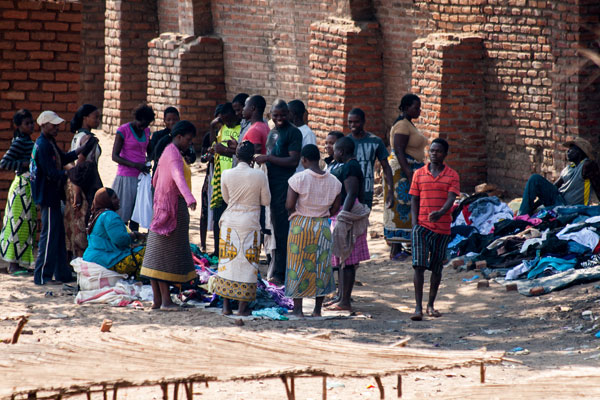 0
0 
If you spent your weekend bingeing on Netflix’s Tidying Up with Marie Kondo, you’re in good company. The KonMari method of organizing and purging has struck a chord world over, garnering a huge following. But what’s to be done with all the clothes that don’t spark joy?
Hopefully you’ll choose to discard the unwanted clothing in a responsible way. That means not putting your clothes in garbage and choosing their next home carefully—or, as Gwyneth might say, consciously uncoupling with them.
If you’re doubting how important this is, here are some sobering statistics to convince you.
- Americans now buy five times the number of garments they bought in the nineteen-eighties, and that number is growing
- The United States produces fifteen billion pounds of textile waste a year
- The Council of Textile Recycling reports that only fifteen percent of those billions get recycled
- clothing, which does not disintegrate easily, makes up six percent of landfill waste
- until an item fully disintegrates, it produces toxins and disburses them into the atmosphere, to wit:
- Rubber-Boot Soles take fifty-eighty years to disintegrate
- Leather shoes take twenty-five to forty years
- Wool Clothing takes one to five years
Assuming I’ve done my job convincing you of recycling’s importance (I’ve done my job convincing you, right?) the next step is figuring out what to do with these items of clothing. Giving them as hand-me-downs to a friend or relative is always a good option. Upcycling them into new pieces of clothing, quilts, bunting, table clothes or artwork is a wonderful approach.
Donating them is also a great strategy, provided you educate yourself.
Logistics play a big part here. Not everyone has a car or frankly a parking lot or garage here, so convenience is important. While there are no curbside textile recycling programs in New York City, refashionNYC, a program launched by the Bloomberg administration in 2011, offers free donation bins to residential buildings. RefashionNYC works in collaboration with the NYC department of sanitation and the non-profit organization, Housing Works. I haven’t seen too many of those out in the wild, so if you know of any, please let me know.
Another non-profit organization, GrowNYC hosts daily Stop’N’Swap events throughout the city, and, in collaboration with the for-profit Wearable Collections, organizes drop-off opportunities at different Greenmarket locations.
Americans now buy five times the number of garments they bought in the nineteen-eighties
You’ll also want to research whatever organization you choose to donate to. We tend to assume that organizations that take these donations will sell them and donate the proceeds to charities, but it’s not that simple
Non-profit entities like Goodwill and the Salvation Army only sell in their stores twenty percent of the items received from donations. Another portion is sold through Goodwill outlets and auctions and what is left, about fifty percent, is sent to for-profit textile recycling organizations.
According to S.M.A.R.T., the organization that represents the interests of secondary materials and recycled textiles, only half of the items received are recycled. About thirty percent of them get cut into rags for industrial use, and twenty percent are processed into a soft fiber for filling furniture, home insulation and car sound-proofing. The destination of the other fifty percent isn’t well publicized. The uncomfortable truth is that at high costs to the environment they make their way across the ocean to East African or Eastern European countries to be sold for a profit, and in effect undermining those developing economies.
There’s a lot to consider when it comes to getting rid of unwanted clothes, and no quick answers. Thinking twice before making another purchase could be the best route to take. Shopping at sample sales is a great way to give clothes a second chance. Sharing this type of information with others will also help.
Further complicating the issue of recycling is that the government, non-profit and for-profit companies are all vying for a sliver of your unwanted clothes, so it’s important to research what the different companies do with your donated clothes.
Posted by Staff Writer at 10:20 AM
Our Views and Opinions |
